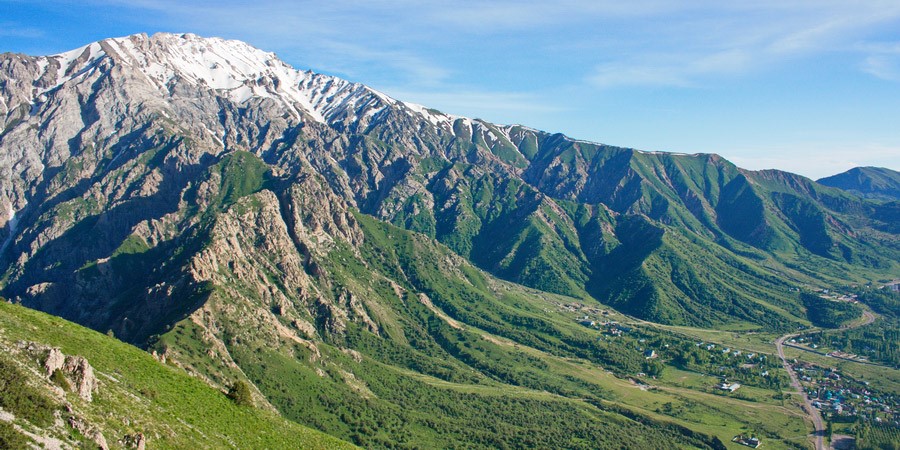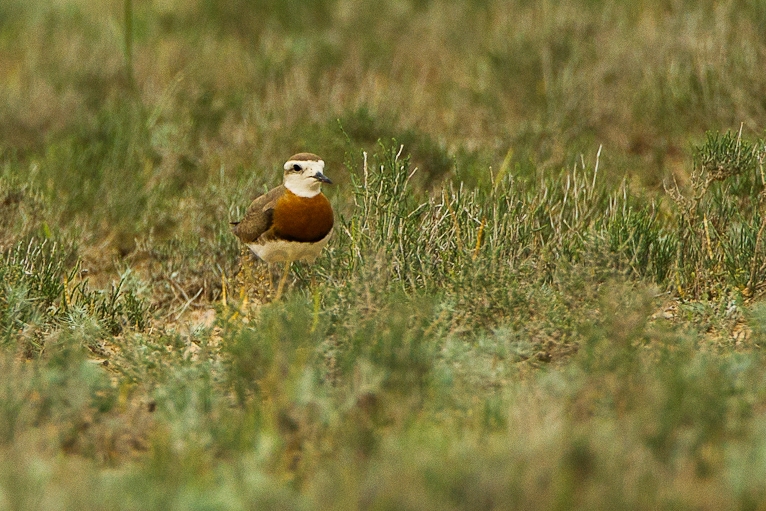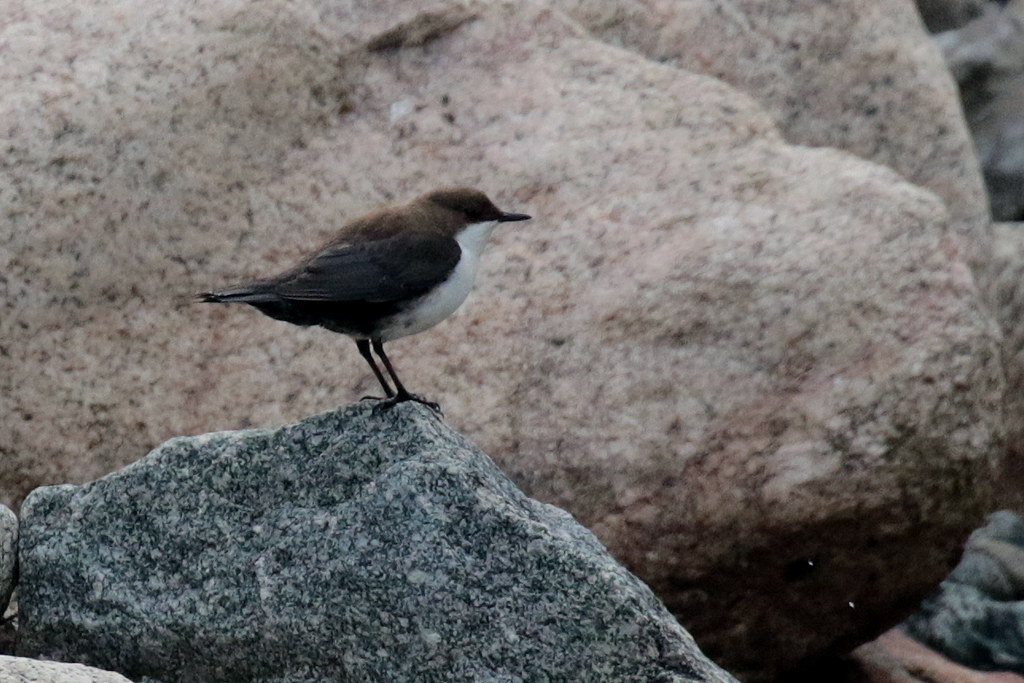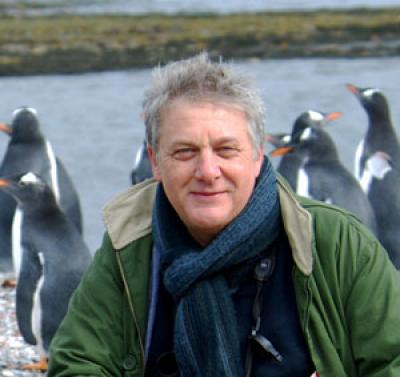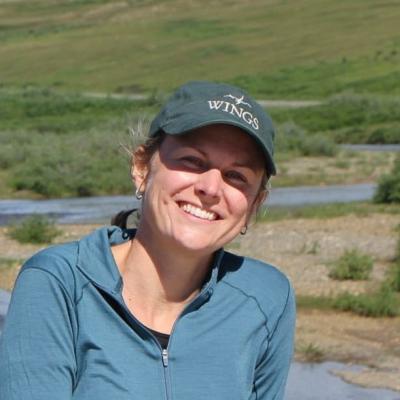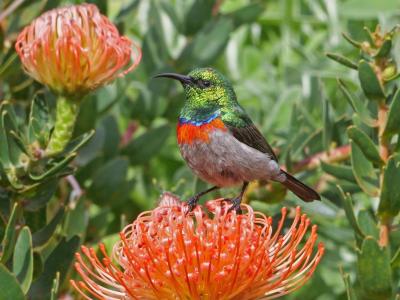Central Asia: Uzbekistan and Kazakhstan
Birding the Silk Road
-
May 6-24, 2025
Steve Rooke with local leaders
-
May 2026
Steve Rooke with local leaders
2026 Tour Price to be Determined
2026 Tour Price to be Determined
The Silk Road, Samarkand, and Bukhara—the names conjure up images of fierce Mongol hordes storming out of the east and of dusty camel trains and crowded bazaars where rare jewels and exotic spices were traded by travelers from far-off lands. Stretching from the Caspian Sea to the Tien Shan Mountains, the Central Asian countries of Uzbekistan and Kazakhstan are indeed richly endowed with history and culture. The varied traditions and customs of this fascinating region are matched by a wide variety of habitats. From Tashkent we’ll take ‘the Golden Road to Samarkand’ and follow the Silk Road to Bukhara, and beyond into the drifting sand dunes of the Kyzyl Kum Desert, where we’ll look for Pander’s Ground Jay, one of the region’s special birds.
Following this ancient trading route to Kazakhstan, we’ll seek out ancient woodlands where Yellow-eyed Stock Doves and Saxaul Sparrows still breed before we reach the dramatic splendor of the snowcapped Tien Shan Mountains, awash with wildflowers and home to Himalayan Snowcock and Güldenstadt’s Redstart. Heading north, we’ll find ourselves surrounded by the enormous skies and wormwood-scented breezes of the Kazak steppes, alive with White-winged and Black Larks and swarms of waders, gulls, and terns. Now oil-rich countries in their own right, Uzbekistan and Kazakhstan are developing fast but still retain an air of mystery and intrigue, which Steve Rooke, on this 32nd tour there, looks forward to sharing with you.
Day 1: Participants should plan to arrive in Tashkent (see note **, below) no later than this evening or (if using Turkish Airlines, the preferred airline for this tour) in the early hours of Day 2. You will be met on arrival and transferred to our group hotel. Night in Tashkent.
Day 2: The group will convene for an early breakfast at our hotel in Tashkent, and afterward we’ll drive to a mountain area. The lower slopes are drenched in juniper trees that are home to Hume’s Lesser Whitethroat, Hume’s Leaf Warbler, Turkestan, Yellow-breasted and Rufous-naped Tits, and White-capped and Rock Buntings. Overhead we can expect Cinerous and Eurasian Griffon Vultures, Booted Eagle, Oriental and European Honey Buzzards, and Hobby. Nightingale songs should echo around the lower slopes and we may encounter Asian Paradise Flycatcher and Blue Whistling Thrush, as well as Indian Golden Oriole. Night at a local hotel.
Day 3: We’ll spend some time this morning birding in this area then set out along the fabled Silk Road to the wonderful town of Samarkand. We should arrive in time to take in a few of the sights, such as the stunning Registan a beautiful assembly of turquoise-blue domes and towering minarets and one of the most famous sites in Central Asia. Night in Samarkand.
Day 4: To the south of Samarkand lies a range of low hills where we’ll stroll along a delightful valley alive with Red-headed Buntings. White-throated Robins and Eastern Orphean and Upcher’s Warblers breed among the bushes, and Hume’s Short-toed Larks feed among the rocky outcrops. Eastern Olivaceous Warbler, Turkestan and Lesser Grey Shrikes and Eastern Rock Nuthatches also breed, along with a few pairs of European Bee-eaters, and we have another chance to find the striking Asian Paradise Flycatcher. We’ll look for Finsch’s Wheatear which should be feeding fledged young by now. Those interested in plants or butterflies will find much to occupy them, as this sun-drenched spot is alive with insects and flowers while, away in the distance, we can see the snow-capped Pamir Mountains in Tajikistan. Night in Samarkand.
Day 5: We’ll have time this morning to visit more sights of the historic city, including perhaps the most amazing of all, Shah-i-Zinda or the Street of Tombs, and the massive Bibi Khanum mosque with its attendant Alpine Swifts. We may also visit some pools on the outskirts of the town where we can expect to see White-crowned Penduline Tit and Water Rail. Later we’ll set out once more along the Silk Road to the oasis town of Bukhara. Night in Bukhara.
Day 6: Today we’ll venture deep into the dry Kyzyl Kum Desert to search for the handsome Pander’s Ground Jay, one of the special birds of Central Asia. These striking grey, black, and white birds spend much of their time running over sand dunes dotted with saxaul bushes, occasionally flying up to perch in a prominent position. We can also expect to see the local desert race of Little Owl, Blue-cheeked Bee-eaters, Steppe Grey Shrike, Isabelline Wheatear, and Streaked Scrub Warbler, while any small stand of trees can hold migrants, from flocks of Rose-colored Starlings and Eurasian Golden Orioles to Thrush Nightingale and Ortolan Bunting. Night in Bukhara.
Day 7: We’ll visit some of the wetlands that surround this old oasis town, exploring reedbeds that are home to Clamorous and Moustached Warblers as well as the Paddyfield Warbler, Bearded Tit, and the local “Thick-billed” race of Reed Bunting. Smart Citrine and Black-headed Wagtails and Bluethroats add splashes of color while White-tailed Plover in breeding plumage are common. Caspian Gulls can usually be found, and although Marbled Ducks occur here, they can be difficult to locate. We’ll also look out for flights of Glossy Ibis and Pygmy Cormorants. We’ll see more Blue-cheeked Bee-eaters and Pied Bushchats, and there is always the chance of a Purple Heron, or Collared Pratincole.
We’ll return to Bukhara to spend the remainder of the afternoon immersing ourselves in the splendor of the historic old town. We’ll visit the Ark, where Stoddart and Connolly met their famous demise in 1842; the Kalen Minaret, one of the few buildings left standing after the visit of Genghis Khan; the trading domes where Silk Road travelers would gather; and many other sights. There will be time to haggle over the price of a Bukharan rug, buy spices, or pause for a cold drink at Labi Hauz, the social heart of the old town, surrounded by magnificent buildings and mulberry trees that were planted in the 15th century. Night in Bukhara.
Day 8: Venturing out of the town once more, we’ll explore a mix of dry scrub, reed-fringed pools, and open desert steppe. We’ll be looking in particular for Sykes’s Warbler, Rufous Bush Robin, and the shy Ménétries’s Warbler. The roadside wires are a good place to see Oriental and European Turtle Doves and Long-tailed Shrikes, while any pool can hold flocks of Red-crested Pochards or migrant Red-necked Phalaropes. We’ll return to Bukhara and board the new high-speed train that will whisk us back to Tashkent. Night in Tashkent.
Day 9: Leaving Uzbekistan, we fly to Almaty in Kazakhstan. On arrival we’ll drive north into the wild heart of Kazakhstan to spend two nights camping in the Taukum Desert, a vast area of undulating sand dunes and wormwood-scented grasslands. On the way we’ll stop at a large lake, where we may witness the bustle of a huge Rose-colored Starling colony and look for White-headed Duck, as well as any unusual migrant waders such as Terek Sandpiper or Lesser Sandplover. Night in the desert camp, where each single or couple will have a good-sized tent.
Day 10: Our camp is located near an artesian well that acts as a magnet for local breeding birds as well as numerous migrants. There should be a constant stream of larks coming to drink—Calandra are the most obvious, but Greater and Asian Short-toed are also frequent visitors and there is always the chance of Bimaculated Lark. Other birds we can expect include flocks of Black-bellied Sandgrouse and, if it’s a good year, a few Pallas’s Sandgrouse, as well as some of the scarce resident Greater Sand Plovers or handsome Caspian Plovers in full breeding plumage. This open desert is also home to Macqueen’s Bustard, and we’ll scan the horizon for a displaying male.
Farther north lies the delta of the Ili River, a strange area of sand dunes interspersed with marshy pools and stands of turanga trees, and home to some of the region’s most special birds. Yellow-eyed Stock Dove, White-winged Woodpecker, Azure Tit, and the beautiful Saxaul Sparrow are all easy to see, and careful searching may reveal a roosting Striated Scops Owl. The reedbeds are home to Little Bittern, Paddyfield Warbler, and some interesting races of Penduline Tit, while the wetlands can hold anything from massive Dalmatian and Great White Pelicans to dapper Ferruginous Ducks. Later we’ll return to the camp and visit clumps of trees and small pools that can attract a dazzling array of migrants that can include anything from Oriental Turtle Doves and Barred and Blyth’s Reed Warblers to Black-throated Thrushes or perhaps a Little Crake or European Nightjar. Night in our desert camp.
Day 11: After a final morning around the camp we’ll return to Almaty. We’ll stop along the way at the same lake to see if there are any newly arrived migrant waders. As we drive, Long-legged Buzzards will be a common roadside sight, and if the rains have been good, there will be vast expanses of poppies stretching to the horizon. We’ll reach Almaty and check in to a comfortable hotel with plenty of time for ‘regrouping’ after our two nights under canvas. Night in Almaty.
Days 12–13: Today we’ll take a mountain road, and climb steadily through pristine spruce forests, into the Tien Shan mountains. We’ll stop to look for Nutcracker, Three-toed Woodpecker, Songar Tit, and Eversmann’s and Blue-capped Redstarts, and, in the mountain streams, Blue Whistling Thrush and both Brown and White-bellied Dippers.
We’ll pause at a lake located in a deep valley and scan the stony shoreline for the Ibisbills that regularly nest here, although our attention will undoubtedly be drawn to the tinkling song and striking plumage of numerous Red-fronted Serins. Once we rise above the tree line, we’ll find ourselves in a crystal-clear landscape of dense juniper bushes, flower-strewn alpine meadows, and snowcapped peaks. The juniper will be alive with the song of Himalayan Rubythroats, Hume’s Leaf Warblers, Black-throated Accentors, Red-mantled and Common Rosefinches, and White-winged Grosbeaks. The beautifully marked Severtzov’s Tit-Warbler can also be found in this habitat, along with the skulking Sulphur-bellied Warbler.
On one day we’ll drive higher to a mountain pass where the handsome Güldenstadt’s Redstart nests and both Red-billed and Alpine Choughs will be wheeling overhead. We’ll also be looking for the Altai and Brown Accentors that inhabit this mountain wilderness, along with Plain Mountain Finches and Water Pipits. We’ll have already heard the eerie calls of Himalayan Snowcock echoing around the lofty peaks, and at this altitude we should be able to look down on some calling males. Nights in a hotel on the outskirts of Almaty.
Day 14: The snow-capped Tien Shan Mountains continue to provide a stunning backdrop to our journey today as we head east towards the open plains and hills of the Upper Charyn region, watching the roadside wires for Rollers and Lesser Grey Shrikes as we go. The scenery in this part of Kazakhstan is truly inspiring with endless desert plains backed by low hills, dramatic gorges and distant snow-capped mountains. The open plains are home to Demoiselle Cranes, Lesser Kestrels, Shore Larks and Asian Desert Warblers, while the low hills and gorges host Rock Sparrow, Siberian Stonechat and Meadow Buntings, and any small spring could be visited by Mongolian and Asian Crimson-winged Finches and Grey-necked Buntings. Raptors could include the mighty Golden, Imperial and Steppe Eagles and on a high pass we hope to see Himalayan Griffon Vultures gliding overhead, along with Black Vultures and perhaps a Lammergeier. Night at a local lodge.
Day 15: If Pallas’s Sandgrouse has avoided us thus far we’ll scour the plains looking for this nomadic wanderer. We are bound to see its more common cousin, Black-bellied Sandgrouse, but Pallas’s cannot be relied on to appear, as their numbers vary from year to year. This is good Saker country, and we’ll be on the lookout for one as well as for Desert Wheatear, smart Desert Finches, Spanish Sparrows, and Pale Martins. We’ll visit an enormous reedbed where Savi’s Warblers reel from the reed tops, competing with noisy Great Reed Warblers. Night at a local lodge.
Day 16: We’ll head back to Almaty and connect with a flight to Astana the bustling and vibrant capital of Kazakhstan. It’s located in the heart of the vast Asian steppe, the sea of grass that once stretched all the way to eastern Europe. Night in Astana.
Days 17–18: We’ll have two days to explore the rich steppe habitat and all that it has to offer. Close to the town we’ll visit a small river to look for singing Bluethroat, and Barred and monotone Booted Warblers. As we venture farther afield, the extensive grassland is peppered with wetlands alive with clouds of Black and White-winged Black Terns and displaying Marsh Sandpipers, while Great Bitterns creep around the reedbeds. We’ll visit a lake that holds Slavonian, Black-necked, and Red-necked Grebes and endangered White-headed Ducks as well as a good selection of passage waders, while a small orchard can be an amazing place for a variety of migrant passerines.
Farther out we’ll enter the ancient steppe with its immense grasslands and lakes of fresh and salt water. Birdsong will fill the air, and the sense of space will be exhilarating. We’ll search the grasslands for Dalmatian Pelican, Pallid Harrier, Red-footed Falcon, Demoiselle Crane, Great Black-headed, ‘Steppe,’ and Slender-billed Gulls, a range of waders including breeding Black-winged Pratincoles, the rare Sociable Plover, hordes of migrant Red-necked Phalaropes, and handsome Ruffs in full breeding plumage. Passerines should include Citrine Wagtail and two splendid larks—White-winged and Black—steppe birds par excellence. Nights in Astana.
Day 19: The tour concludes this morning with a transfer to the airport.
Note: The information presented here is an abbreviated version of our formal General Information for Tours to Central Asia. Its purpose is solely to give readers a sense of what might be involved if they take this tour. Although we do our best to make sure that what follows here is completely accurate, it should not be used as a replacement for the formal document which will be sent to all tour registrants, and whose contents supersedes any information contained here.
ENTERING UZBEKISTAN: United States citizens need a passport valid for six months after the date of entry, and with at least one blank visa page, and a tourist visa. For US citizens age 55+, a visa-free regime has been established for entering the Republic of Uzbekistan for tourism purposes for a period not exceeding 30 days. For more information, visit the website of the Embassy of the Republic of Uzbekistan in the US: https://uzbekistan.org/visa/ Other US citizens can apply for electronic visas to Uzbekistan at https://www.e-visa.gov.uz/. WINGS will send you all the necessary paperwork closer to departure.
ENTERING KAZAKHSTAN: At the time of this writing (May 2024), US citizens do not need a visa for trips of up to 30 days but will need a passport valid for six months after the date of entry. Further visa details are available at the Embassy of the Republic of Kazakhstan in the USA’s website:
https://www.gov.kz/memleket/entities/mfa-washington/activities/5896?lang=en&parentId=5894.
Important Note: At the time of writing UK citizens do not need a visa for either country. It is essential that citizens of other countries contact their nearest embassies or consulates for both countries to see if they require visas or official letters of invitation. If you do, please notify the WINGS office as soon as you book so that we can let you know what we need from you to have the letters of invitation issued. Note that some countries do not have either a Kazakhstan or Uzbekistan Embassy and people living in these countries will have to apply to alternate Embassies. However, it is possible to obtain a visa for both Uzbekistan and Kazakhstan on arrival in the country. We can advise you on this nearer the time.
COUNTRY INFORMATION: You can review the US Department of State Country Specific Travel Information on Kazakhstan and Uzbekistan at https://travel.state.gov/content/travel/en/international-travel/International-Travel-Country-Information-Pages/Kazakhstan.html
You can also review the CIA World Factbook background notes on Kazakhstan and Uzbekistan here: https://www.cia.gov/the-world-factbook/
Review foreign travel advice from the UK government here: https://www.gov.uk/foreign-travel-advice and travel advice and advisories from the Government of Canada here: https://travel.gc.ca/travelling/advisories
PACE OF TOUR: Participants should have a good degree of fitness and mobility and be prepared for the occasional discomfort. Walks vary but can be up to 2 miles in total. We sometimes walk over uneven or rocky grounds and there are some uphill walks at altitude in the mountain regions we visit. In the mountains some uphill walking is inevitable but we do all we can to keep this to a minimum. There will be some very early starts such as the day we visit the Kyzyl-Kum Desert as we need to be there very early to avoid the intense midday heat. During an average trip there are some departures at 5:00am or 5:30am but typically the day starts around 6:00am. We usually finish around 6:00pm although there may be longer days if we have a lot of travelling to return to our hotel or if we are taking a late domestic flight.
Central Asia is a big place and as a result, we have to cover a lot of ground to get to all the various habitats. Consequently there are some long drives, the longest being from Bukhara to Samarkand and from Samarkand to Tashkent, each around four hours in duration, but the drives out east from Almaty, and north into the Taukum Desert are also drives of around three hours duration. One day in the steppe around Astana involves a long drive to get to the main areas, and back.
Camping will obviously be simple (but fun) and you need to be prepared for that. Generally most people are surprised by just how comfortable the camping is. Everyone gets their own tent (see Accommodation below).
Tourism in Central Asia is still a low-key affair away from places like Samarkand and Bukhara and you should be prepared for the occasional hitch. Things tend not to happen quickly and patience is needed when dealing with things like hotel check-in and especially at the airports.
HEALTH: The Centers for Disease Control and Prevention (CDC) recommends that all travelers be up to date on routine vaccinations. It is important that you consult your doctor or local travel clinic to find out what vaccinations you will need. Please contact your doctor well in advance of your tour’s departure as some medications must be initiated weeks before the period of possible exposure.
The most current information about travelers’ health recommendations can be found on the CDC’s Travel Health website at: https://wwwnc.cdc.gov/travel/destinations/traveler/none/uzbekistan https://wwwnc.cdc.gov/travel/destinations/traveler/none/kazakhstan
Altitude: We will reach elevations of up to 10,800 feet during our time in the mountains.
Smoking: Smoking or vaping is prohibited in the vehicles or when the group is gathered for meals, checklists, etc. If you are sharing a room with a non-smoker, please do not smoke in the room. If you smoke in the field, do so well away and downwind from the group. If any location where the group is gathered has a stricter policy than the WINGS policy, that stricter policy will prevail.
Miscellaneous: Tap water is basically OK in the large hotels but to be safe, we recommend that you drink bottled water, which along with soft drinks and beer, is widely available. Upset stomachs can be encountered in Central Asia and in fact seem to be on the increase in the Bukhara region. We suggest bringing anti-diarrheal medicine such as Imodium. Sachets of rehydration powder are also worth bringing as it replaces the vital salts and minerals lost during a bout of diarrhoea. We also suggest bringing a broad-spectrum antibiotic if your doctor will prescribe them for you.
We will experience strong sun in several places so a good sunscreen is important. Sunglasses are also worth bringing, not only for the strong sunlight but also for the snowfields in the Tien Shan Mountains.
CLIMATE: At this time of year the weather can be changeable and difficult to predict. We should experience generally uniform temperatures and weather conditions away from the mountains but in recent years there have been some wet and cold springs. In the mountains around Almaty the altitude alone will ensure that the nights and early mornings will be cool. However even here the sun will very quickly raise the temperatures and if there is no cloud cover it can get very hot, even at 10,000 feet. As with any alpine environment the conditions can change quickly and you should come prepared for this. Away from the mountains we should experience dry and sunny weather with temperatures rising to the mid-80s F (mid-30s C) in places. The hottest place will probably be the Kyzyl-Kum Desert and a good sun hat and adequate sunscreen will be needed here. It is not humid. The weather can be cool in the northern steppe up at Astana with rain a distinct possibility. You will need to be prepared for wet and cool weather almost anywhere in Kazakhstan, less so in Uzbekistan.
ACCOMMODATION: In Almaty, Astana, Tashkent, Samarkand and Bukhara we stay in good quality modern hotels or small guesthouses with all the usual facilities. When we stay east of Almaty we use a basic but comfortable lodge. Here there are limited rooms available so if we have a large number of singles, single rooms cannot be guaranteed. The bathroom facilities are shared. There are 2 twin-bedded rooms to each unit and each unit has a toilet and separate hand basin. The showers are also shared and are in a separate room along the corridor.
We’ll spend two nights camping in the Taukum Desert. The camp is very comfortable and uses reasonably sized tents, each with a low camp bed, and foam mattress. A sleeping bag is provided although you can bring your own if you wish. A sleeping bag liner is a good idea though. The camp has a separate kitchen and ‘mess’ tent where our (excellent) meals are served. Washing facilities while camping will be basic. There are simple taps for washing hands, brushing teeth etc. and two shower tents. The toilets are simple earth toilets with conventional toilet seats. We have found the camping to be surprisingly comfortable but if you have any queries about this aspect of the tour, please contact the WINGS office. Note that after our two nights at the camp, we stay in a comfortable hotel in Almaty.
Internet Access: An increasing number of the hotels we use have internet access although it can be painfully slow. The hotels in Uzbekistan will all have WiFi. In Kazakhstan, the hotels in Astana and Almaty have WiFi but away from there do not expect any sort of internet access. Mobile phone access is very good throughout both countries and most services seem to work there.
FOOD: Central Asian cuisine is usually adequate and sometimes surprisingly good to excellent. Salads are ubiquitous and generally the meals are not too spicy although they can be in one or two places. Soups feature largely in the diet as does meat but vegetarians usually cope fairly well. There will be opportunities to try a few regional specialities.
Food Allergies / Requirements: We cannot guarantee that all food allergies can be accommodated at every destination. Participants with significant food allergies or special dietary requirements should bring appropriate foods with them for those times when their needs cannot be met. Announced meal times are always approximate depending on how the day unfolds. Participants who need to eat according to a fixed schedule should bring supplemental food. Please contact the WINGS office if you have any questions.
WINGS tours are all-inclusive and no refunds can be issued for any missed tour meals.
Drinks: Bottled water, soft drinks or a beer (or local wine if available) are included at meals, as is coffee or tea. In addition, we keep a supply of bottled water on the tour vehicles. Bottled or filtered water may also be provided in some rooms where we stay.
TRANSPORT: Transportation is by coach or minibus and two internal flights. There are a few long drives and these are broken by stops for birdwatching. In Uzbekistan, where the roads are good, we usually have a large luxury coach if we have a full or nearly full tour, although on some days we need to switch to small minibuses. To travel from Bukhara to Tashkent we use the new high-speed train. In Kazakhstan we use a smaller vehicle to cope with the various off-road driving we need to do. Participants must be willing and able to ride in any seat in tour vehicles and we will organise a seat rotation policy.
2024 Narrative
It has to be said that the weather during this year’s tour could at best be described as ‘interesting’. In what seems to be a cold and wet spring across much of Eastern Europe and Central Asia we experienced a real mix of conditions including heavy rain, low cloud and fog, and a mini 40-degree heatwave. Undaunted we set out from the leafy city of Tashkent to our first stop in some low mountains. Here the sought-after Rufous-naped Tit showed well, along with Yellow-breasted Tit, Indian Golden Oriole, Asian Paradise Flycatcher building a nest, Siberian Stonechat, Rock and White-capped Bunting and a very obliging male Blyth’s Rosefinch which sat perfectly still for ages for the telescope and cameras.
Moving on to Samarkand we explored the hills to the south of the city where White-throated Robin, Eastern Rock Nuthatch, numerous Red-headed Buntings, Barred and Eastern Orphean Warblers, Pied Wheatears, and Turkestan and Lesser Grey Shrikes were some of the highlights. We also took time to explore this ancient Silk Road city taking in the Registan, Gur Amir, Shah-i-Zindha, Bibi Khanum mosque, and Uleg Begs Observatory. Inspired by all this splendour, we followed the golden road from Samarkand to Bukhara. Here a day out in the Kyzl-Kum desert gave us the hoped-for Pander’s Ground Jay along with other residents such as Sykes’s Warbler and Streaked Scrub Warbler. There were migrants as well including Eurasian Nightjar, Wryneck, Golden Orioles, Red-backed Shrikes, numerous Spotted Flycatchers, Common and Thrush Nightingale, a lone Brambling, lots of Greenish Warblers and Siberian Chiffchaffs, and a few very pale grey Willow Warblers.
We spent a pleasant few hours wandering the old town of Bukhara enjoying the view from the Ark, hearing about the ill-fated Great Game exploits of British officers Stoddart and Conolly, getting lost in the trading domes, and sampling a cold drink by the pool at Labi Hauz, the social centre of the town. Venturing out of town once more we were soon looking at a displaying Macqueen’s Bustard, Little Owl, Collared Pratincoles, White-tailed Lapwings, Menetries’s Warbler, a noisy group of Streaked Scrub Warblers, and some dashing Blue-cheeked Bee-eaters. Then we were whisked back to Tashkent on the super high-speed train and soon on a flight to Almaty in Kazakhstan.
From Almaty we headed north, stopping first some wetlands where we saw our first Dalmatian Pelicans and a lone White-headed Duck, along with Black-necked Grebes, Ferruginous Duck, and Great Reed Warbler. Our camp was located in the Taukum Desert with a constant backdrop of singing Calandra and (Asian) Lesser Short-toed Larks. Driving further north we stopped for Short-toed Eagle and Oriental Honey Buzzards before we reached the edge of the Illi River delta. Here we watched a pair of smart Saxual Sparrows at their nest site, tracked down Yellow-eyed Stock Dove, White-winged Woodpecker, and Azure Tit in the turanga woodland. Back at the camp we explored the surrounding desert finding numerous Demoiselle Cranes, Greater Sand Plovers and Black-bellied Sandgrouse. Leaving the camp (and the heat) behind we retraced our steps to Almaty and from there into the dramatic Tien Shan mountains. On the very high tops we saw a pair of Guldenstadt’s Redstart, Altai and Brown Accentor, Red-billed and Alpine Chough, Plain Mountain Finches, and Water Pipits. We also had a few Himalayan Snowcocks in flight, and a fantastic fly-past from a magnificent Lammergeier. Lower down we had really stunning views of White-browed (Severtzov’s) Tit-Warbler with two males displaying to a female, and amongst the juniper bushes and spruce trees there was Nutcracker, Black-throated Accentor, Blue-capped and numerous Eversmann’s Redstarts, Sulphur-bellied Warbler, glowing White-tailed Rubythroats, hulking White-winged Grosbeaks, and Hume’s Leaf Warblers. The ever-reliable Ibisbill is always high on everyone’s want list and although it took some searching, we eventually found one that gave good telescope views.
We next travelled east, following the Tien Shan mountains. Here we visited a variety of habitats. On a high pass we located two male Meadow Buntings. On the open plains there was Steppe Eagle, Lesser Kestrels, Asian Desert Warblers, Desert Wheatears and Rock Sparrows while at a secluded waterhole we watched Mongolian Finches coming to drink, joined by Asian Crimson-winged Finch and a male Pallas’s Sandgrouse.
Our final destination was the vast northern steppe surrounding the new capital of Astana. It was with some trepidation that we travelled there having heard stories about extensive flooding affecting much of the region. There was indeed much more water than usual and the steppe grass was very green and tall. Some of our usual tracks were closed due to flooding but by carefully picking our way through these areas we caught up with the star birds of the steppe. These included a group of nine Sociable Lapwings, initially distant but then they all flew and landed closer, giving great ‘scope views. Black Larks were everywhere, and we also found lots of White-winged Larks, Great Black-headed Gulls, Black-winged Pratincoles, White-winged Black and Black Terns, and Red-footed Falcons. With so much water everywhere the shorebirds were spread out but we did find one large gathering that included many Ruff, some males in fine breeding plumage, Curlew, Marsh, and Terek Sandpipers, Temminck’s and Little Stints, and hordes of Red-necked Phalaropes. Pallid Harrier numbers always vary, along with their main prey item of Pygmy Sousliks. This year the numbers were low and we only managed to see two, one male and one female. Booted Warblers and Bluethroats sang at us from low bushes, Paddyfield Warblers chased each other through the reeds, Red-necked and Slavonian Grebes were joined by lots of Great Crested Grebes and Red-crested Pochards, and there were plenty of Whooper Swans in large groups. The tour ended with the Kazak national dish at our hotel before we all departed for our flights home.
- Steve Rooke
Steve has admirable knowledge of the birds, their vocalizations, locations visited and their cultural and historical background. He is calm under pressure and quick to adjust to unforeseen events without ever seeming stressed. He is fun to be around and his stories are fascinating.
- Petra W. on Central Asia: Uzbekistan and Kazakhstan
**Accommodation the night of Day 1 and airport transfer on arrival are included in the tour cost. Meals on Day 1 are not included.
Tour dates may change slightly when summer airline schedules are published.
Single rooms or rooms with en suite facilities may not be available in some places. See Tour Information for details.
Maximum group size 10 with two leaders. Both leaders will accompany the tour irrespective of group size.

